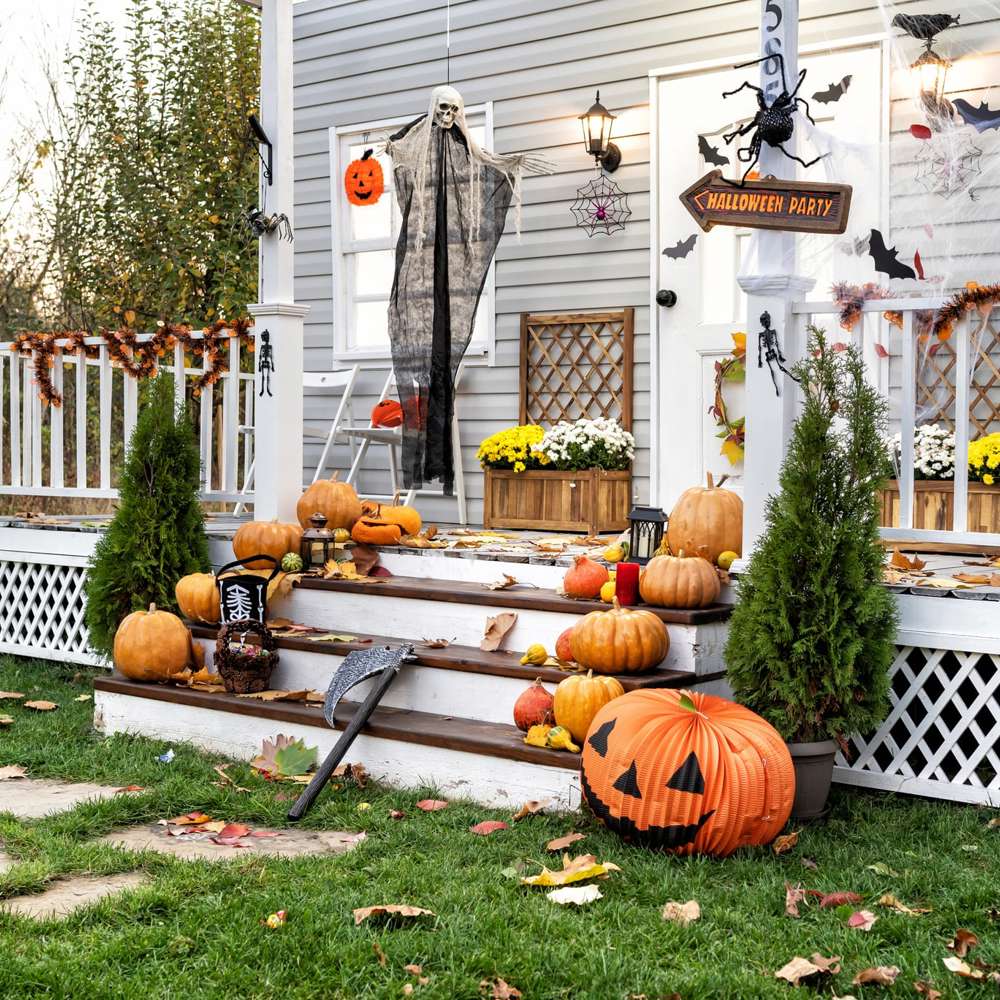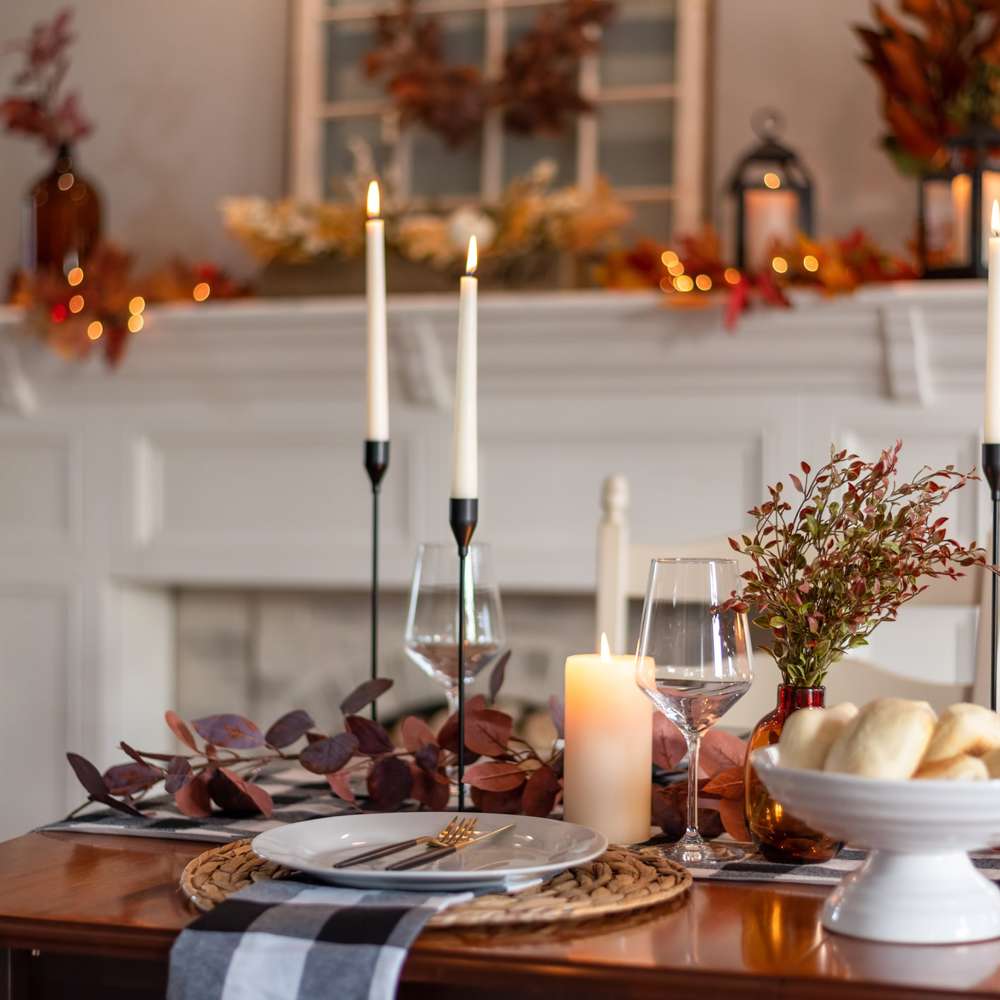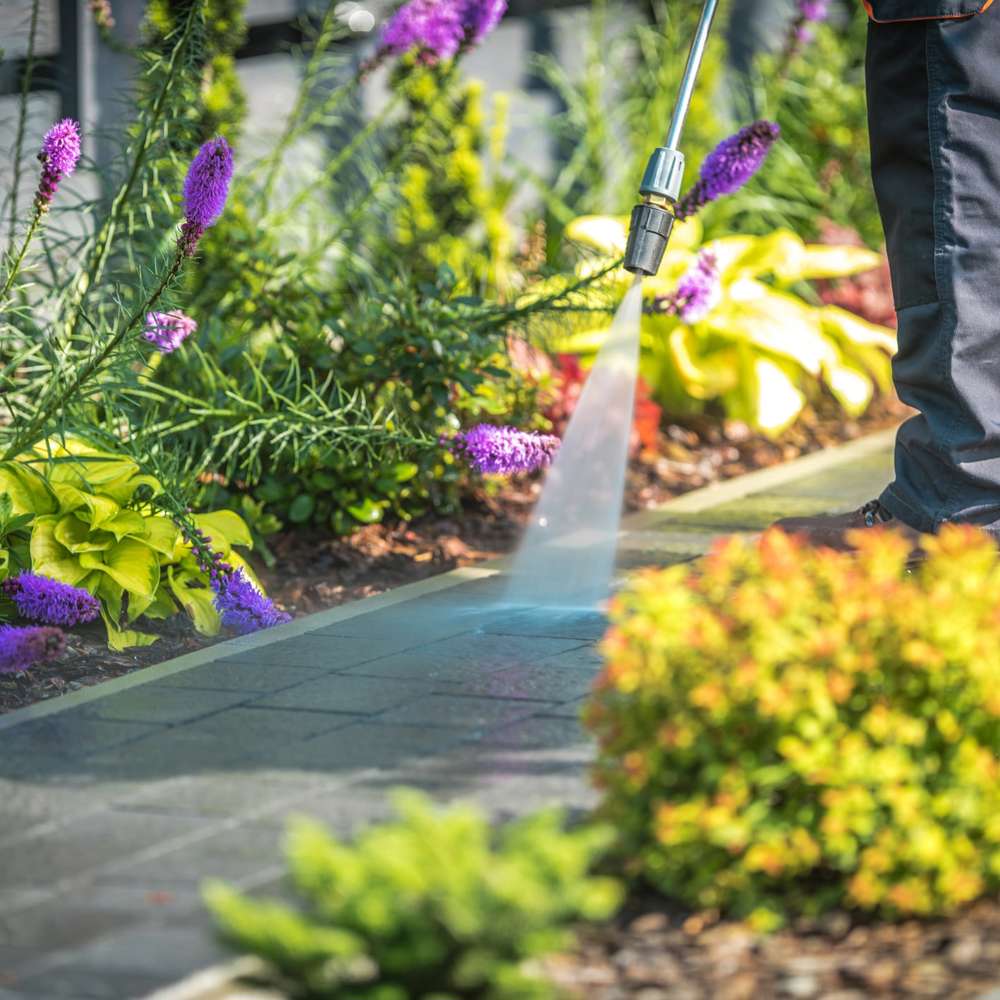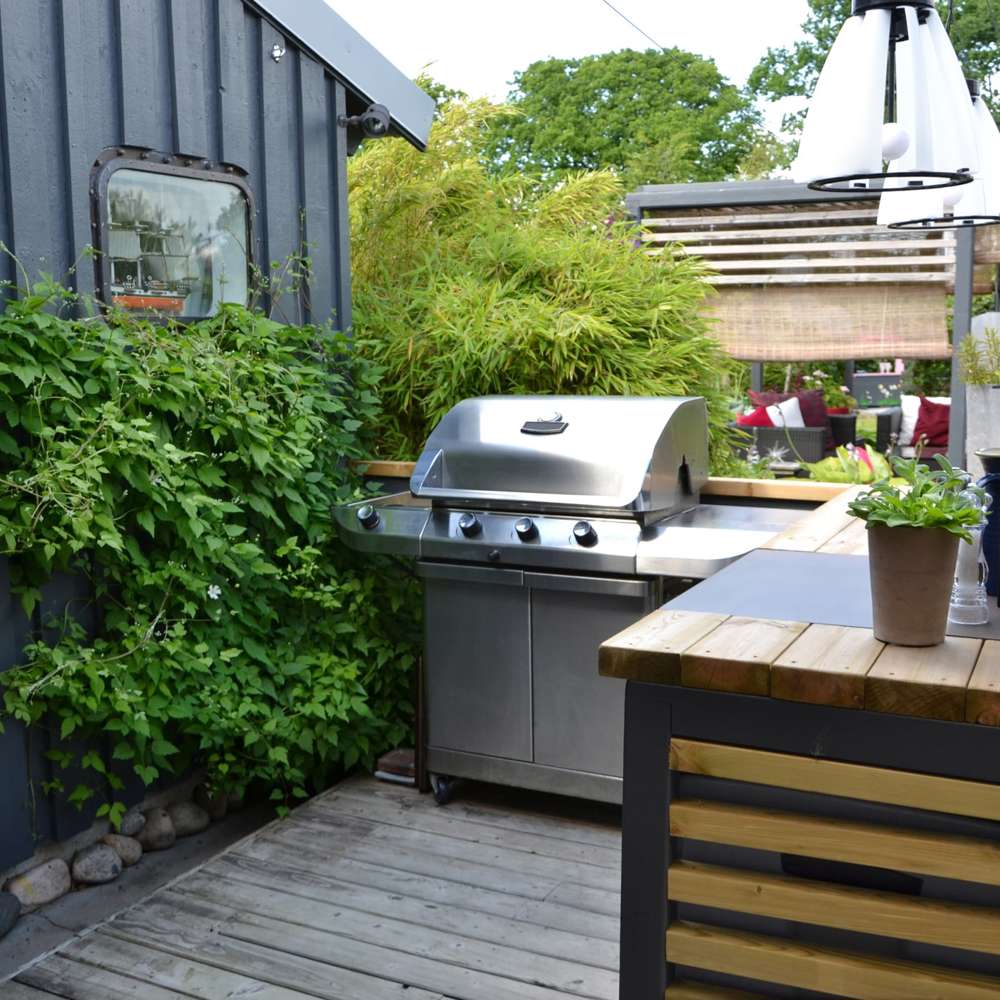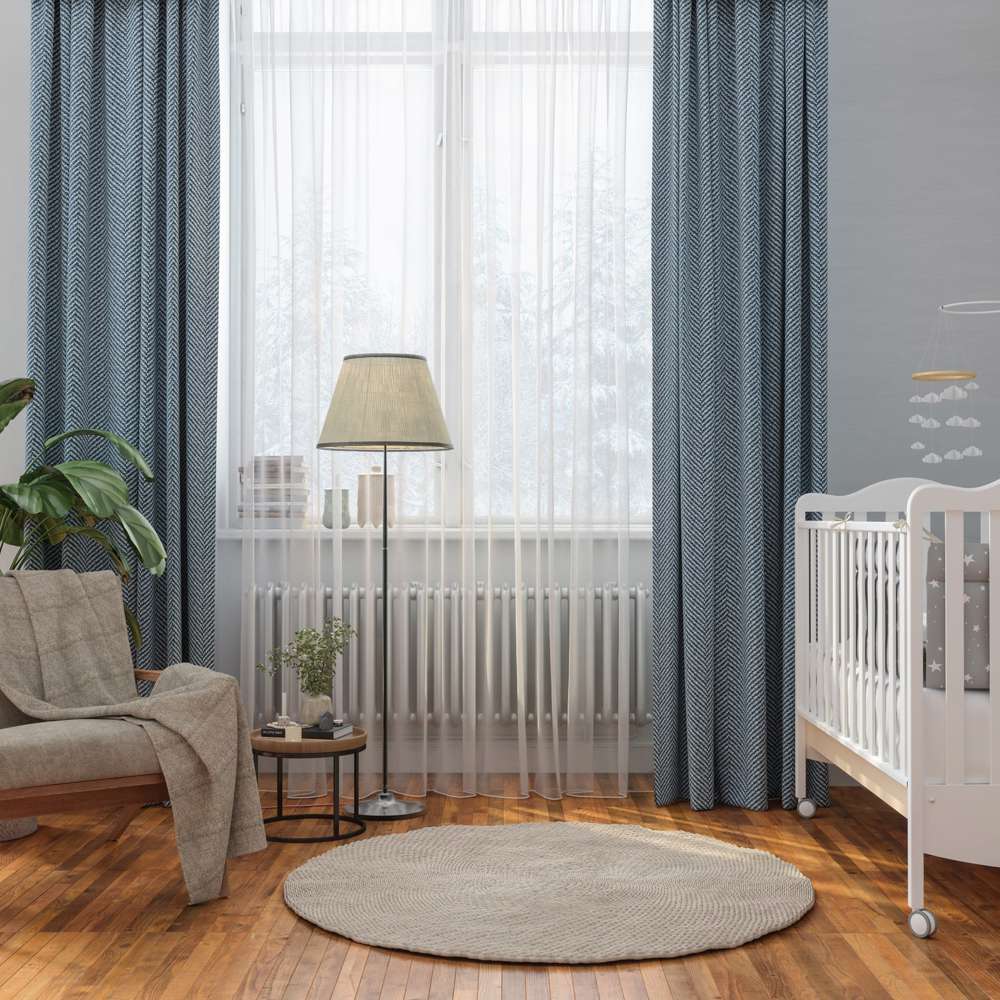There are a number of reasons to opt out of having grass in your backyard, whether you’re looking to cut down on water use or avoid all the upkeep that a grassy yard requires. The good news is that you have options if you decide to go the “no-mow” route, many of which are budget-friendly, visually striking, and low-maintenance. Read on to learn our favorite no-grass backyard ideas that won’t break the bank.
1. Gravel and Stone
When it comes to creating a stunning backyard without grass, gravel and stone are two of your best options. Not only do they come in a range of colors, shapes, and sizes, but they are also affordable, widely available, and easy for first-time homeowners to maintain.
For a striking look, try using large, flat stones at least one-inch thick (limestone, granite, and slate are popular options) to create a winding path that leads to a shaded corner, table, reading nook, or fountain. Then surround the path with gravel that compacts well. You can play with contrasting or complementary hues as well as the spacing between the flat stones, depending on whether you want more of a stepping-stone appearance or a tightly fitted pathway. You’ll also want to include a border, typically made of galvanized steel or plastic, to keep the gravel contained.
| Tip: Gravel is an excellent choice if you live in an area with lots of rain. While it doesn’t absorb water like soil, the gaps in gravel allow rainwater to pass through easily, preventing water accumulation. |
2. Paver Patio
A paver patio can be a durable and functional addition to your backyard. Pavers come in numerous shapes, colors, and materials, allowing you to create a design that looks attractive while providing a stable foundation for an outdoor dining area, fire pit, pergola, and more.
While they take longer to install than a concrete patio, interlocking pavers are better at withstanding cracks from stress because they can expand and contract. The gaps between pavers can also be filled with sand or small stones, which provides good drainage when it rains. Plus, repairs are much easier because you can remove and fix single pavers. Be sure to occasionally pull any weeds that grow between the pavers and clean up any grime or stains with a simple soap-and-water solution.
3. Xeriscaping
Xeriscaping is an eco-conscious alternative to landscaping that focuses on minimizing water use in your yard by filling it with native, local plants. The idea is to rely on water from the natural climate rather than irrigation. Xeriscapes often consist of drought-tolerant plants as well as soil, mulch, and rocks instead of grass. Environmentally conscious irrigation methods like drip irrigation or hand watering are preferred to sprinkler systems, which tend to result in wasteful run-off.
Xeriscaping works particularly well in arid regions or places with water restrictions — a xeriscape can save up to 50-75% of water use compared to a traditional lawn, or up to 120 gallons of water per day. It also requires less mowing, fertilizing, and general maintenance than grass. That said, you may need to invest slightly more upfront for a xeriscape or to convert from a traditional landscape into a xeriscape. It’s best to work with a professional to help design and install the elements, especially if you want to include hardscaping elements like pathways or patios.
4. Mulch Landscaping
Mulch is an excellent alternative to grass, providing a neat, clean, and natural ground cover for your backyard. There are plenty of different mulches you can choose from, including straw, rubber mulch, and slightly more expensive cedar and pine bark wood chips. It’s often better to go with a chunky, fresh organic mulch (as opposed to aged mulch) because it lasts longer. Besides its aesthetic appeal, mulch offers a number of functional benefits, including retaining soil moisture, suppressing weeds, and all-in-all making your backyard easier to maintain.
5. Raised Deck
Enjoy hosting friends and family? Consider transforming an uneven, grassless backyard into a sanctuary for gatherings with a raised deck. You can choose from a range of materials, including wood, composite, or even aluminum, customizing the dimensions to suit your space and budget. Once you’ve finished your raised desk, you can decorate it with planters, sculptures, weatherproof furniture and rugs, lighting, and heaters to create an enjoyable outdoor space.
| Tip: The process of building a raised deck involves creating a stable foundation, usually with concrete footings, then constructing a frame using treated lumber, and finally installing the deck boards. While you can save on labor costs by taking on some of the work yourself, consider hiring a professional to ensure your deck is built properly and safely. |
6. Container Gardens
Even without a grassy lawn, you can create a lush oasis in your backyard with container gardens. The concept is simple enough to implement, even for those without a green thumb. All you’ll need are pots and plants in a variety of shapes, materials, and sizes; potting soil; and the plants you want to grow. Flowers, herbs, and ornamental grasses are all great options for a container garden, and the best part is that there are no real restrictions on what you can plant or pair together.
To create depth and interest in your backyard, try arranging the containers at different heights, whether it’s perching them on tabletops, hanging them from tree branches or metal hooks, or using large, sculptural freestanding planters. You can also mix and match containers (contrasting between terracotta, stone, metal, and wood) as well as the colors and silhouettes of your plants.
| Tip: Consider how your container garden looks through your living room or bedroom windows, and how you can echo the colors and shapes inside of your home. If you need help, check out our Guide to Biophilic Interior Design. |
7. Backyard Water Features
A water feature can transform your backyard into a tranquil retreat. From a simple bird bath to a flowing waterfall, there are plenty of options to fit different budgets. A small stand-alone pond or in-ground pond can serve as a habitat for fish and plants, while a striking wall or statue fountain can provide soothing sounds and a focal point for the backyard. Consider adding fencing and shading options to create the ultimate private space.
8. Create a Multi-Use Storage Shed
Whether or not you have grass, adding a small storage shed that doubles as a functional space — whether it’s a she shed, guest retreat, studio, or other space — can be a great way to make use of backyard space. Consider placing any bulky seasonal furniture and other items in a self-storage unit so you can clear out the shed for smaller objects and truly elevate it into a multifunctional space.


